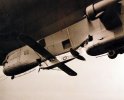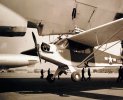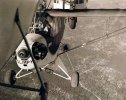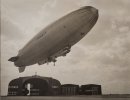I’d love to see those course rules!A busy day at Lakehurst in 1930.
This photo shows various LTA craft:
ZK (kite balloon)
ZF (Free Ballon)
ZMC-2 (Metal Clad Blimp)
ZR-3 (Rigid) USS Los Angeles
J-2 and J3 Blimps (never designated with Z)
View attachment 42279
-
Please take a moment and update your account profile. If you have an updated account profile with basic information on why you are on Air Warriors it will help other people respond to your posts. How do you update your profile you ask?
Go here:
Edit Account Details and Profile
You are using an out of date browser. It may not display this or other websites correctly.
You should upgrade or use an alternative browser.
You should upgrade or use an alternative browser.
Up Ship - Naval Lighter Than Air
- Thread starter PhrogPhlyer
- Start date
The more things change, the more they remain the same.course rules

Ever have one of those days...
25 August 1927 With the crew onboard, the ZR-3 USS Los Angeles gets flipped by a strong wind gust at the Lakehurst high mast.
Minimal damage from some falling tool boxes, and no injuries, it flew the next day.

25 August 1927 With the crew onboard, the ZR-3 USS Los Angeles gets flipped by a strong wind gust at the Lakehurst high mast.
Minimal damage from some falling tool boxes, and no injuries, it flew the next day.

You know there was global scale puckering going on in that gondola!Ever have one of those days...
25 August 1927 With the crew onboard, the ZR-3 USS Los Angeles gets flipped by a strong wind gust at the Lakehurst high mast.
Minimal damage from some falling tool boxes, and no injuries, it flew the next day.

And some of the crew were running aft to try and slow the accent, THAT must have been one heck of a ride.You know there was global scale puckering going on in that gondola!
I found it here.First time I've seen this pic. Do you have the link to this photo and maybe an article?
USN LTA: World War II – Airship History
 airshiphistory.com
airshiphistory.com
Thanks Griz.
It appears that airshiphistory.com is restating snippets from the materials they sell as "history lessons," with only a few references back to something they sell. They make many incorrect statements in these lessons.
There is no contact information on the site, but I'll do some more research and see what I can find.
This was an interesting and exciting period in LTA development and advancement.
It appears that airshiphistory.com is restating snippets from the materials they sell as "history lessons," with only a few references back to something they sell. They make many incorrect statements in these lessons.
There is no contact information on the site, but I'll do some more research and see what I can find.
This was an interesting and exciting period in LTA development and advancement.
I agree with your assessment of the site. It allows for limited access to some information but lacks depth. Sadly, I think this organization,
 www.naval-airships.org
www.naval-airships.org
may have folded their tent during COVID. I think it would be worth trying to revive and modernize a bit.
Navy Airships and Goodyear Blimps | Naval Airship Association, NAA
NAA, Naval Airship Association, Airship and LTA Lighter than Air Enthusiasts, Navy Airships and Goodyear Blimps, Noon Balloon Publisher, Naval-airships.org
may have folded their tent during COVID. I think it would be worth trying to revive and modernize a bit.
NAA still exists.
Their main problem now is that JB MDL won't allow the public onto Lakehurst.
Perhaps in the future, there might be a separate museum/Hangar 1 gate.
But for now, if you have base privileges, you can visit if you contact then directly beforehand.
I have spoken with them and they are using this time to chart the future and possible growth of the museum and organization.
The Noon Balloon is a great read.
Their main problem now is that JB MDL won't allow the public onto Lakehurst.
Perhaps in the future, there might be a separate museum/Hangar 1 gate.
But for now, if you have base privileges, you can visit if you contact then directly beforehand.
I have spoken with them and they are using this time to chart the future and possible growth of the museum and organization.
The Noon Balloon is a great read.
Last edited:
A lot of digging with very little information available, but here is what I discovered.adding a spotter aircraft to their airships
Project Warbler was a “hook on” experiment with the M Class blimp based at Naval Air Station Lakehurst in March 1944. The project was conducted to determine if a small airplane could be carried aloft by a blimp and then be released to fly back to the ground. The possible roles included scouting and returning personnel and material to a shore base. After three test flights, the project was abandoned and both the NE-1 and blimp were returned to the fleet. There was no attempt at having the NE-1 hook back onto the blimp while in flight.
The XM-1, an M class blimp ZNP-M-1, and two NE-1s (J-3 Cub/L-4 Grasshopper) were used. One of the NE-1s had a custom paint scheme and was named "Glimpy."
One source stated that plans were also made to arm a remote-controlled version of the NE-1 with a depth charge and release the aircraft when enemy submarines were spotted (a predecessor to the concept of drone warfare). Not substantiated by documentation.


Note buckled hanger struts above the NE-1, and the slight tears to the blimp canvas. Also a prop strike (prop tip and gondola damage) cn be seen.


From the history of what is now MCAS Miramar. https://militarymuseum.org/MCASMiramar.html
During the 1920's, civilian and military aircraft utilized the former parade ground as a landing field. San Diego's aircraft manufacturers also used the facility for flight testing - including Charles Lindbergh's Spirit of St. Louis in 1927. From 1929 to 1930, San Diego Air Service Corp. operated the airfield as Air-tech Field. In 1929, the City of San Diego passed a bond issue and purchased 1,000 acres for the Navy's proposed West Coast dirigible base; however, the base went to Sunnyvale, California (Moffett Field). Two years later, the Navy leased 430 acres that included the former parade ground for an outlying field. The mooring mast at North Island was moved to Camp Kearny in 1932 for a visit by the Lakehurst based USS Akron. Twenty five thousand spectators were on hand to watch the arrival of the Akron on May 11, 1932. A gust of wind ended the first mooring attempt, carrying the airship upward with four ground handlers holding on to a mooring line. One man jumped to the ground and suffered a broken arm. As the airship continued to ascend, two men lost their grip and fell to their deaths. One man managed to hang on as news camera crews captured the tragic event. The Moffett based USS Macon used the mast at Camp Kearny four times before its destruction off Point Sur on February 12, 1935. The airfield received its first hard surface in 1936, when a very small portion was paved.
During the 1920's, civilian and military aircraft utilized the former parade ground as a landing field. San Diego's aircraft manufacturers also used the facility for flight testing - including Charles Lindbergh's Spirit of St. Louis in 1927. From 1929 to 1930, San Diego Air Service Corp. operated the airfield as Air-tech Field. In 1929, the City of San Diego passed a bond issue and purchased 1,000 acres for the Navy's proposed West Coast dirigible base; however, the base went to Sunnyvale, California (Moffett Field). Two years later, the Navy leased 430 acres that included the former parade ground for an outlying field. The mooring mast at North Island was moved to Camp Kearny in 1932 for a visit by the Lakehurst based USS Akron. Twenty five thousand spectators were on hand to watch the arrival of the Akron on May 11, 1932. A gust of wind ended the first mooring attempt, carrying the airship upward with four ground handlers holding on to a mooring line. One man jumped to the ground and suffered a broken arm. As the airship continued to ascend, two men lost their grip and fell to their deaths. One man managed to hang on as news camera crews captured the tragic event. The Moffett based USS Macon used the mast at Camp Kearny four times before its destruction off Point Sur on February 12, 1935. The airfield received its first hard surface in 1936, when a very small portion was paved.
Video and stills of North Island USS Akron line handler deaths.


